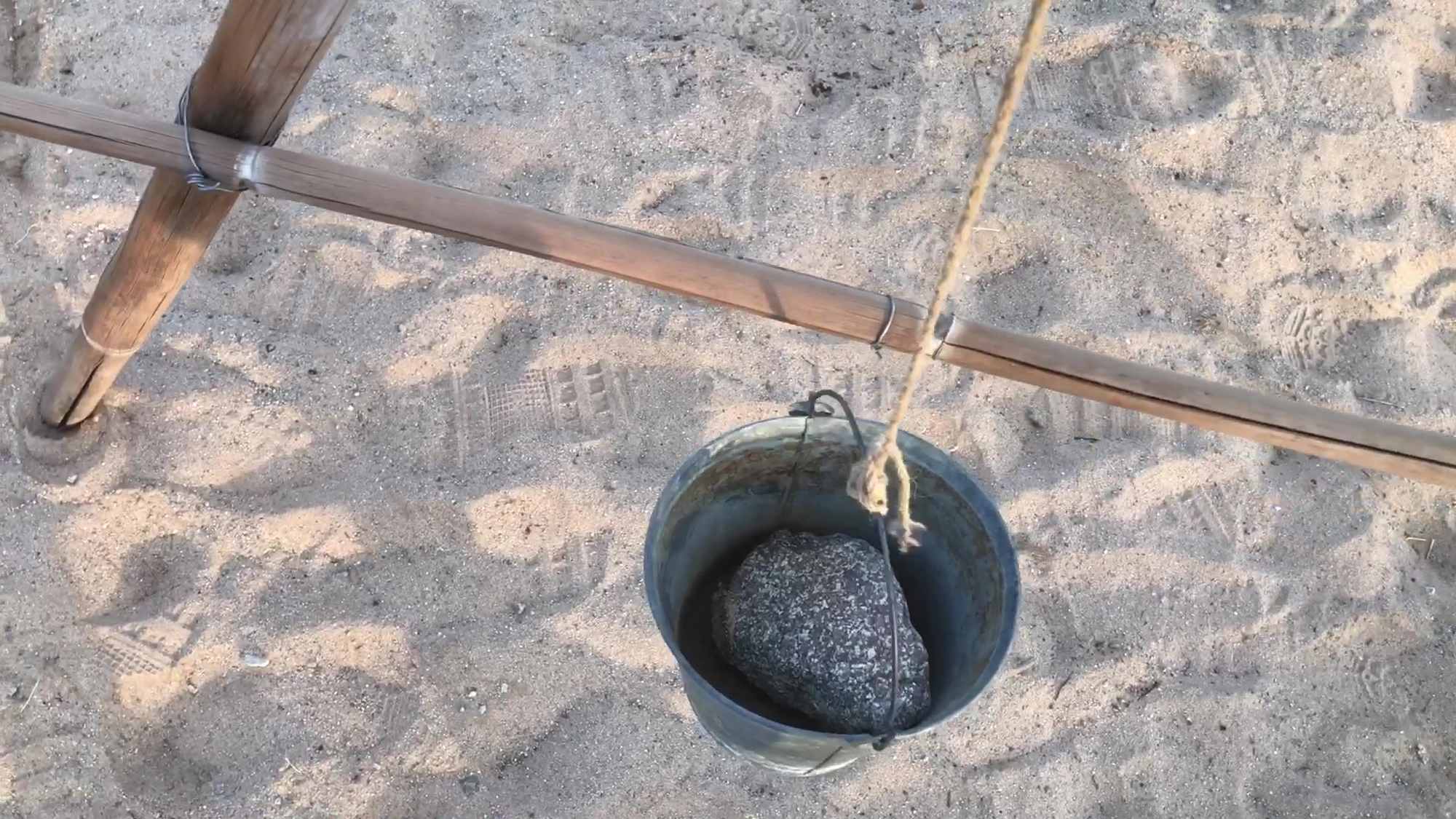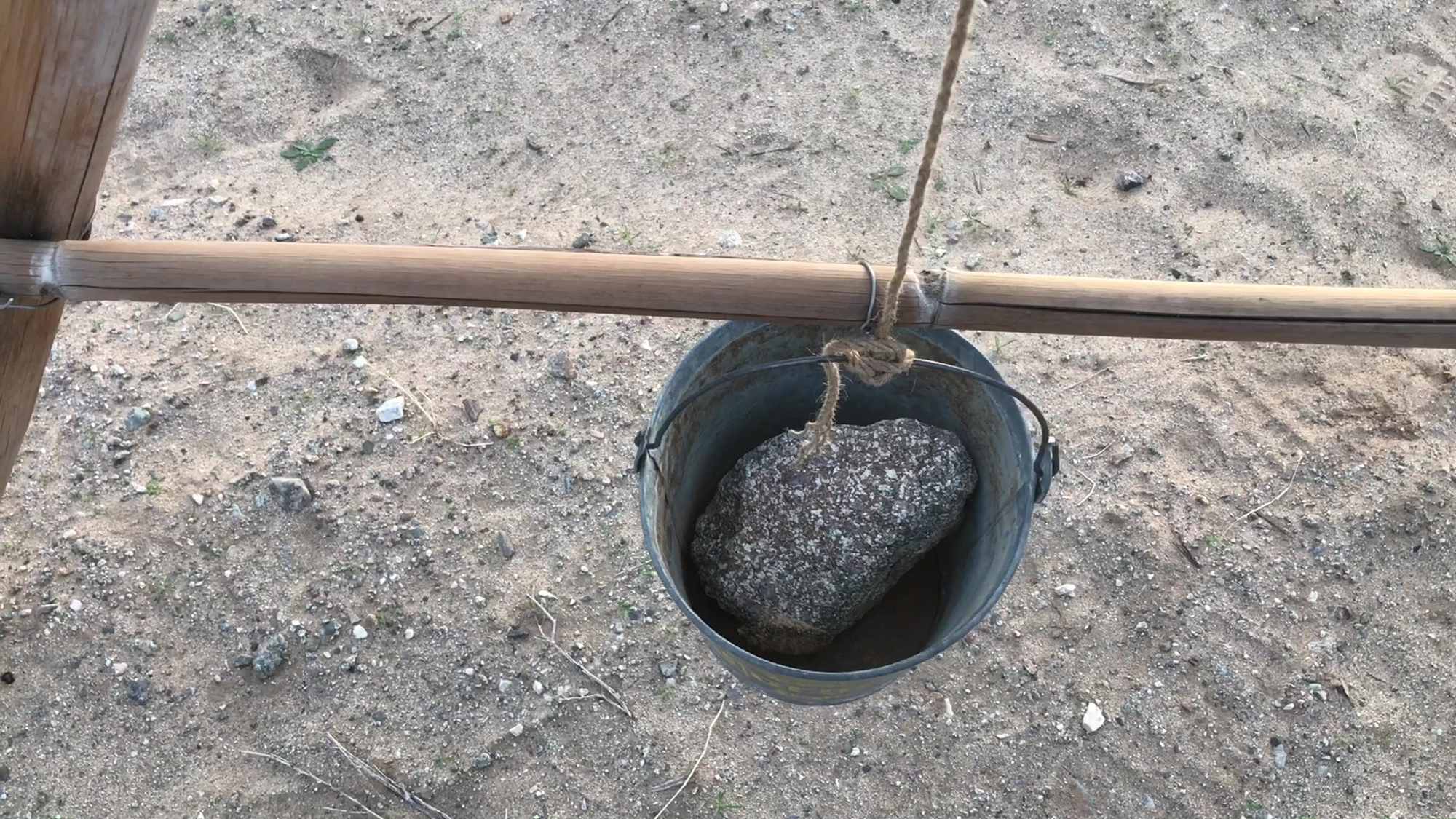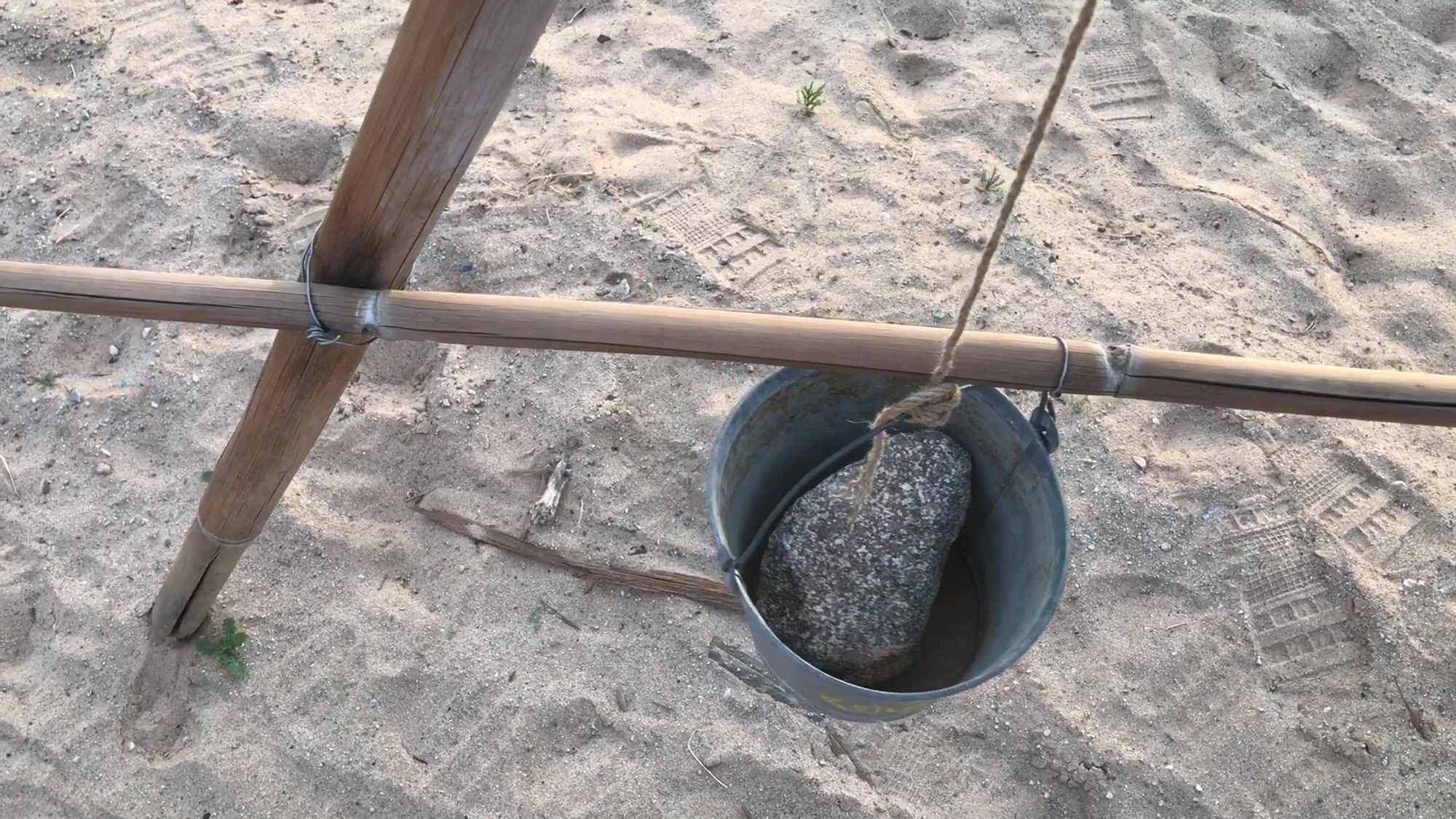
01 Calibrating A Frame Level With Rope Pail Rock And Wire Marker

02 Walking The A Frame From One Level Point To The Next

03 Adjusting A Frame Level To Align With The Nearest Level Point
Bamboo A Frame Level For Flagging And Digging Contour Ditch Rain Catchment Swales
There are many ways to find the level points that make up a contour line on a slope. So far I've used very low tech options including a tube and yard stick water level system and the a-frame level system. There are many more advanced and high tech tools that I'm hoping to have experience with some day, for now the least expensive and most easily replicated is the a-frame level. Whether with pipes, or lumber, or bamboo, or pretty much anything that you can make a sturdy a-frame out of, the idea is simple, calibrate the a-frame and walk it across the land, marking the level points along the way. To further explain the way it works. If you hang a weight of some kind (here I'm using a metal pail with a rock in it) hanging with rope from the center of an a-frame, if the two legs of the a-frame are on level ground, wherever the rope crosses the beam connecting the legs indicates that both feet of the legs are on level ground. So as long as you start on level ground and calibrate it properly by marking where the rope rests, you can walk the a-frame across a slope and continue to adjust the position of the forward leg until the rope hits the calibration mark and indicates that you've found the next level point. This process allows you to zig-zag across the landscape continually finding each level point based on where ever you started. Even if the a-frame itself is not perfectly shaped, you can compensate for by creating a distinct mark on either side of the a-frame. All that matters is that it's very sturdy and it doesn't change shape during use. To be as precise as possible, it's always best to calibrate to both sides of the cross beam as there's always a chance that the calibration point will not be exactly the same. Here I'm using a single calibration point to just provide a rough example but I'd use two to be more precise.